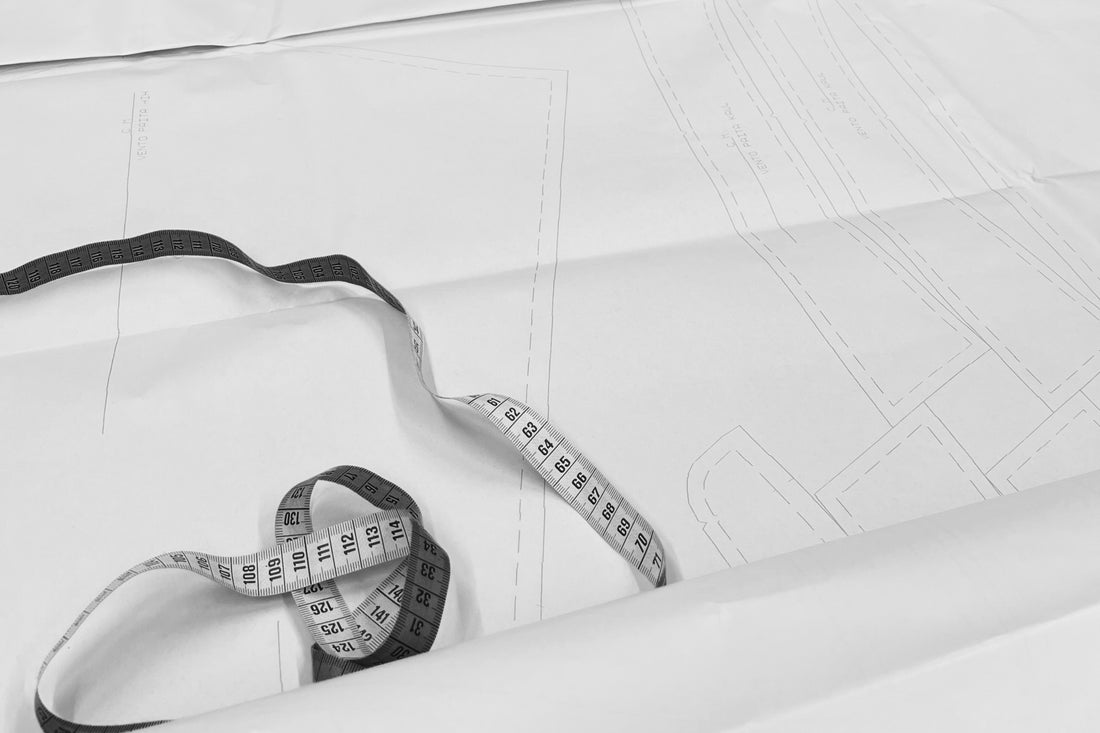
SKETCH TO PRODUCT PROCESS
Share
How does the first sketches become the final product? Let's take a look at the sketch to product process of our LUMI pieces!
The design process starts with brainstorming, sketching and moodboards. We do not create garments just for the sake of creating new nor do we follow the latest micro trends. We carefully consider the purpose and need of each garment. Our garments are designed to look good today, tomorrow, next year and the next decade.
Who would buy this? What would be timeless? What details we want to include in the garment? Which material we want to use?
For us, it's all about the core items of the wardrobe.

Searching for the right materials might be difficult. Sometimes you find a perfect material, but it isn't the perfect match with the designed garment.
For example, we went through countless fabric samples to find the perfect linen fabric for our LUMI pieces. We had one fabric in mind that we loved, but it was so low in stock that we couldn't use it. We had to keep searching and thankfully we found a fabric we loved even more - truly a blessing in disguise!
The garment usually requires other materials than just fabric - elastics, interfacing, buttons etc. We want to take responsibility into account when looking for materials for even the smallest details. For example, rather than using plastic buttons, we use natural Corozo buttons in our garments! You can read more about the materials we use here.

An illustration of the garment serves as a guide for production. All the details are stated in the illustration!
When the right material has been found and the design for the garment is ready, it's time for the patterns. When starting the sample process, we made the patterns only in one size - a size we could try on. In that way we avoided unnecessary work and we only needed to modify one pattern through the sample process.
Each garments has some small details that need to be taken into account, for example size- and wash care labels. Our labels are made from recycled polyester in Estonia and the labels are OEKO-TEX® standard 100 certified.
Did you know: in Finland you need to file for a permission to use the washing icons in the labels, since the textile care instruction icons are a registered trademark!
When all the materials for the garments are ready the sample production can start. Based on the first samples, we decided to make some changes to the length and fit and new patterns were made. After the changes, a new round of samples was put to production.
The second samples still weren't perfect so the patterns were modified again and third samples were made.
When the third samples were ready, after the fittings, the garments only needed some fine tuning of the details so there was no need to do a fourth round of samples.
The sample process is time consuming and probably the slowest part of the design process. Doing many rounds of samples is also expensive. Sometimes the first sample is perfect and sometimes it might take even longer than it did with our LUMI pieces.

When the sample looks as desired, the production can begin. Our garments are made in super small batches and we can't guarantee that a once sold out garment will be brought back.
When the production is ready, it's time for the photoshoots, planning the launch, marketing, etc.!
In some other manufacturing countries, you can get all the materials and patterns for the garments through the factory. But since the textile industry in Finland is quite small, a brand needs to search for the materials, product card, patterns, labels etc. separately on their own and then deliver everything to the factory.
All our products are designed and produced in our home country, Finland. The best thing about having production here, is that all our partners are near us and we work closely with each other!
Written by Meri, the founder of Vento Clothing
